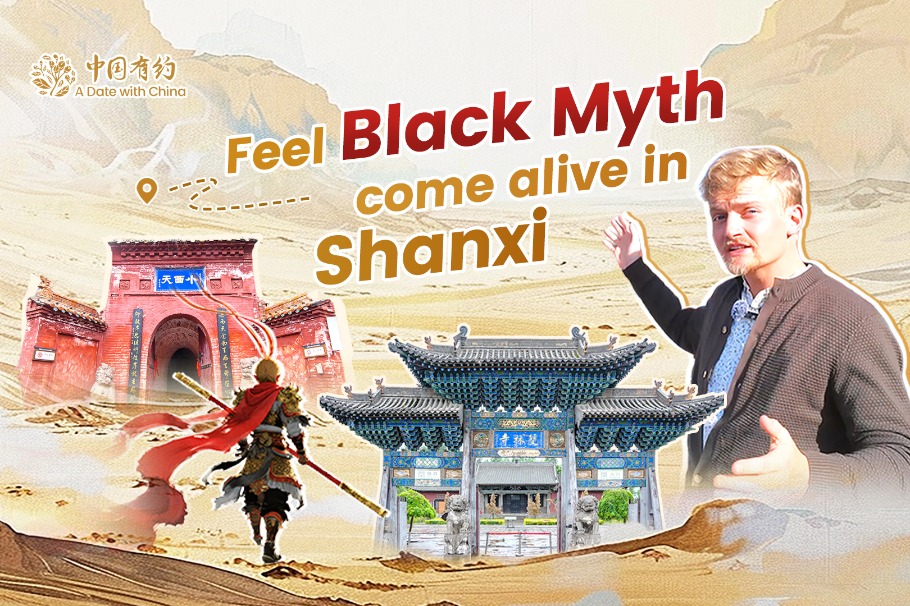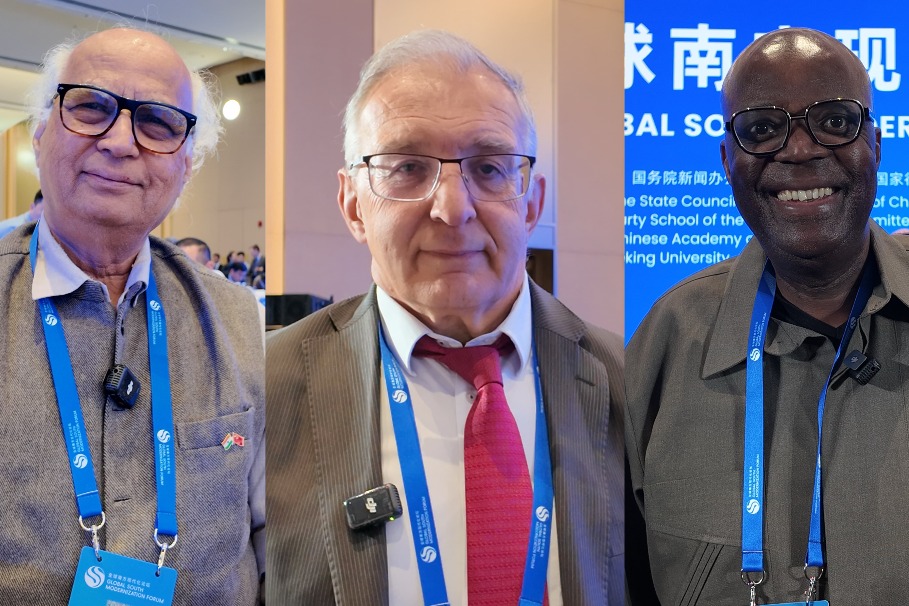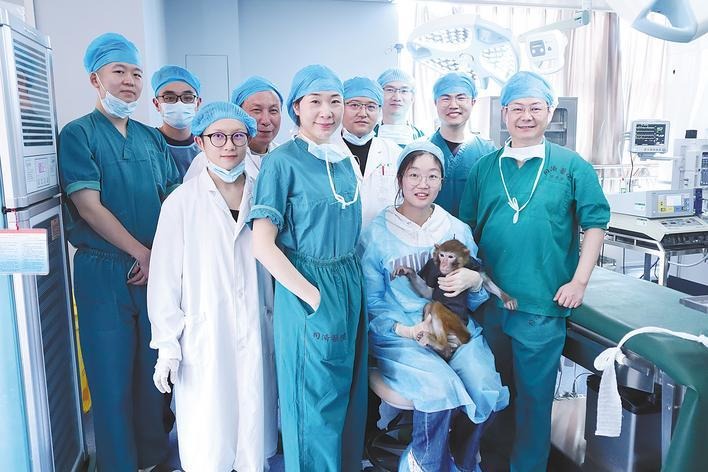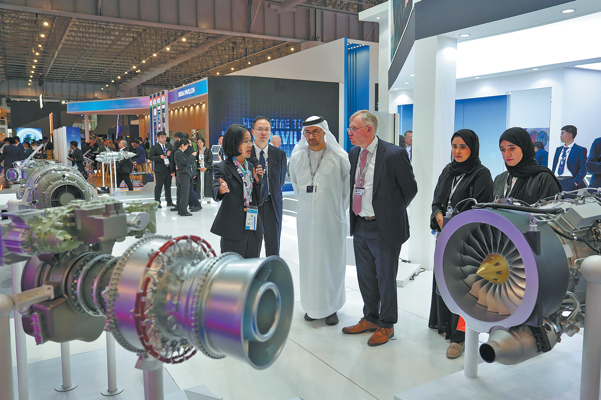Springboard to success

|
|
Xiamen is just 17.7 km from Taiwan, or half an hour by speed boat from the island of Kinmen. There are also direct flights to Taipei and, when skies are clear and winds are strong, Xiamen residents are able to pick up radio signals from Taiwan. They have no problems understanding the programs, because they share the same dialect as the Taiwanese. At the height of the Cold War, thousands of troops, tanks and warships were deployed on both sides of the Taiwan Straits. In seeking out Chinese mainland studies, Lin Yifu, the Taiwan-born deputy director and chief economist at the World Bank, is said to have swum across the Straits to Xiamen at night in 1979, using two basketballs, from Kinmen island.
Lin would probably not have imagined then that, 30 years later, with warmer ties between the Chinese mainland and Taiwan, direct liners now run 36 times between Xiamen and Kinmen every day. Xiamen Daily reports that the liners have carried a total of 1.3 million person-times in 2010, the highest number since the liner service opened up in 2001.
With Taiwan's Kuomintang leader Ma Ying-jeou taking office in 2008, economic cooperation across the Straits has also reached a higher level.
Xiamen's economic position has increased significantly since the Economic Cooperation Framework Agreement (ECFA) between Taiwan and the mainland took effect in September 2010. The total volume of imports and exports between Xiamen and Taiwan from January to November 2010 hit $582 million (443 million euros), up by 55.4 percent compared to that of the same period in 2009, Customs figures show.
"ECFA is a milestone for the economic integration of the Chinese mainland and Taiwan," says Chen Xiancai, associate professor with Xiamen University's Taiwan Studies Institute.
With ECFA, more capital from Taiwan will flow to the mainland and to the central and western parts of the country in particular, such as Chongqing municipality and Henan province. Conversely, more capital from the Chinese mainland will flow into Taiwan, providing more job opportunities, Chen says.
There are about 4,000 Taiwan-funded enterprises in Xiamen, accounting for 5 percent of the country's total, Chen says.
Among these is AU Optronics Corp, a manufacturer holding more than 17 percent of the world's large-sized TFT-LCD market. Xiamen has also served as the gateway for the distribution of Taiwan fruits and agricultural products to other parts of the country.
Xiamen's Committee on Trade and Development reports that Taiwan's direct investment to Xiamen has exceeded $7 billion (5.2 billion euros) by end of September 2010, and it has surpassed Japan to become Xiamen's second-largest trade partner after the US.
Xiamen's location made it prominent as early as the 17th century.
General Zheng Chenggong (1624-1662) of the Ming Dynasty (1368-1644) based his troops on Xiamen's Gulangyu islet and later successfully retrieved Taiwan from the Dutch. In 1832, H. H. Lindsay, an employee with the East India Company, reported to the British government that if the allied forces were to win the war against China, they had to take Xiamen by all means. And after China lost the Second Opium War in 1862, more than a dozen Western countries claimed settlement on Xiamen. Nowadays, general consulates of Singapore, Thailand and the Philippines are still based in Xiamen.
Together with Shenzhen, Zhuhai, Shantou and Hainan, Xiamen was one of the five special economic zones set up by the Chinese government in the 1980s and 1990s. The city has now expanded to an area of 1,865 sq km on land and 300 sq km on the sea, comprising Xiamen island, Gulangyu and three surrounding coastal zones. Its current population is 2.52 million, 60 percent of which live on Xiamen Island.
Figures from Xiamen Customs show that Xiamen's total volume of imports and exports from January to November in 2010 exceeded $50 billion (38.1 billion euros), up by 32.1 percent compared to the same period the previous year.
Ben Van Rooy, chief executive of New Zealand's trade point distribution, singles out Xiamen as the base of his trading business in European bottled wines and Chinese sheepskin boots.
"The Dutch have trading in their blood and I find Xiamen perfect in terms of logistics," says Van Rooy, a Dutch emigrant to New Zealand. "Everything is so accessible here. You will feel the ease of travel, compared to Beijing, Shanghai or a European metropolis."
More than 2,300 foreign enterprises have also chosen to have a base in Xiamen, including HSBC, Standard Chartered, GE, Siemens, ABB, Dell, Shell, Samsung and Toyota.
According to Xiamen's Foreign Service Center, these foreign companies come from 59 countries, with about 160 on the Fortune 500 list.
Linde Material Handling, a German-funded company, is considered to be one of the first joint ventures that settled in Xiamen. In 1993, former Chinese premier Li Peng and former German chancellor Helmut Kohl signed an agreement at the Great Hall of the People in Beijing, implementing the economic cooperation between Germany and China, with Linde being a key project.
Tee Seng Chuan, Linde's strategic marketing director, says Xiamen is now becoming "a center for globalization".
Chinese Vice-Premier Xi Jinping also attended the China International Fair for Investment and Trade (CIFIT) in September last year to celebrate its 14th anniversary. The event attracted about 15,000 foreign politicians, investors and traders from 144 countries and regions.
Other CIFIT VIPs included Iceland's President lafur Ragnar Grmsson, US Undersecretary of State for Economic, Energy and Agricultural Affairs Robert D. Hormats and British Secretary of State for Business, Innovation and Skills Vince Cable. It has drawn organizations like the International Finance Corporation, affiliated to the World Bank, the Paris-based Organization for Economic Co-operation and Development, and the United Nations Conference on Trade and Development.
Statistics from the CIFIT show that during the four days of the event, 639 contracts had been signed, attracting a total investment of about $22.4 billion (17 billion euros), among which $19.2 billion (14.6 billion euros) was foreign capital.
Xiamen has also developed an efficient transportation network by building five bridges to connect its major island to other coastal zones, breaking a number of world and national records in terms of length and height. In April 2010, China's first tunnel under the sea, measuring 8.7 km, opened to traffic, connecting Xiamen island to the city's Xiang'an coastal zone. The 3.2 billion-yuan (367 million euros) project took five years to complete, shortening the travel time significantly from 1.5 hours to 8 minutes.
Xiamen also boasts an ice-free port, with a coastline stretching 234 km. In 2009, it ranked 19th in the world, registering a volume of 110 million tons for incoming and outgoing freight. Similarly, the Xiamen International Airport is one of the busiest of its kind in China, with direct links to 172 cities at home as well as to 43 other countries and regions. By the end of 2014, when the high-speed railway from Shanghai to Hong Kong via Xiamen is completed, it is expected to take about two hours to travel from Xiamen to Hong Kong and one and a half hours to Shanghai.
The city government has also invested about 3 billion yuan (344 million euros) to set up five Bus Rapid Transit (BRT) lines to ease the daily commute of its residents, with a total length of 115 km. First introduced in the eco-city of Curitiba in Brazil, the BRT is different from normal bus transit. Its buses are powered by electricity and travel exclusively on flyovers in the streets and are known as the "upper-ground subway".
Xiamen residents are also proud of their 31-km-long Huandao Ring Road that circles the island. Driving along the six-lane highway is a visual treat for many drivers and passengers who can sometimes view sunsets and moonrises by Xiamen's beaches.
Zhang Weiwei, chief editor of Common Talk, an English-Chinese newspaper in Xiamen, says: "There is so much more than favorable logistics that has attracted foreign investors here."
"Xiamen is a fantastic place to live, a utopia," Van Rooy says.
In terms of climate, many people arriving from Beijing to Xiamen in winter will find the sub-tropical area a paradise, where temperatures will hit no lower than 5 C at night. At high noon, people can also bask in T-shirts at the beaches. Even in late December, flowers such as the Chinese redbud and bougainvillea blossom along the streets. Gavin Newsom, the mayor of San Francisco, once commented that the two cities looked very much alike.
Netizens in China have voted Xiamen as one of the top 10 cities they must visit during their lifetimes. The city has also won the UN Habitat Scroll of Honor Award and is regarded as one of the cleanest in China. Xiamen residents have done much to protect their valuable environment. In 2007, with the help of green NGOs, they successfully pressured the local government to turn down the opening of a US chemical plant in Xiamen.
"What makes Xiamen different from Beijing and Shanghai is the quality of life here and the people's relationships. The competition in Beijing and Shanghai is so much higher People here are so kind," Van Rooy says.
On the first Saturday of January every year since 2003, residents from all walks of life take part in the Xiamen International Marathon. Running largely through major scenic sections of the city including the beaches and the Huandao Ring Road, the race is regarded among the most beautiful marathon courses in the world. This year, about 64,000 people from 45 countries participated in the race.
Ineke Gudmundsson, a Dutch artist who has assisted many artists in their exhibitions at famous museums such as the Centre Pompidou in Paris, is celebrating her 14th year in Xiamen. She is now director and founder of the Chinese European Art Center, which has set up an artists-in-residence program, inviting artists from Europe and other areas to reside in Xiamen for three to six months before presenting an exhibition of their experience.
Gudmundsson hopes Xiamen will not develop too fast and become like any other modern city with skyscrapers like Chicago, but keep its own flavor.
"I have been to many places in the world, and there are places where I feel I don't belong. But Xiamen is like a home."
Today's Top News
- China, US hold maritime safety talks in Hawaii as Beijing reiterates warnings on sovereignty
- China sends letter to UN over Japanese PM's remarks on Taiwan
- Chinese, Uzbek FMs hold second strategic dialogue
- G20 an opportunity to strengthen Sino-EU ties
- China, Africa foster shared food security
- Japan urged to take practical steps to honor its commitments to China






























